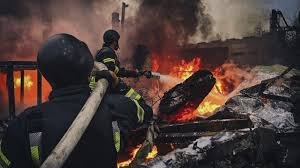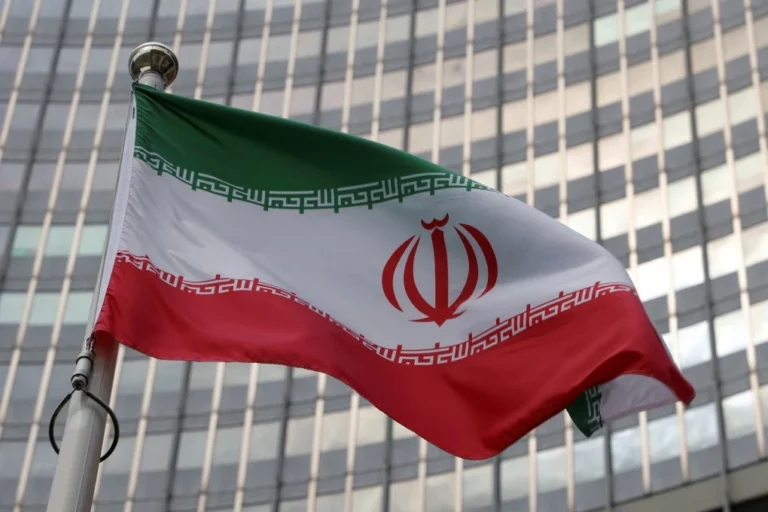
A War Entering a New Phase
On June 5, 2025, Russia launched a new wave of ballistic missile strikes on Kyiv in response to Ukraine’s increasing frequency of drone attacks inside Russia’s territory. These strikes resulted in civilian injuries and damage to infrastructure and mark yet another turning point in a war more defined by asymmetric ways of fighting. This analysis presents the facts, context, and consequences of this incident, while considering how both sides are responding deeply to an extended war.
Ukrainian officials stated that in the early morning hours, eight ballistic missiles were launched at Kyiv, six of which were intercepted by air defence systems. The two that landed caused injuries to at least 12 civilians, alongside structural damage to residential areas and city infrastructure.
The Russian Ministry of Defense claimed the targets were “military-industrial and command centers,” though independent verification of these specific claims is lacking. The attack followed a recent Ukrainian drone strike that reportedly hit an oil depot near Tula, a significant distance inside Russian borders, raising the stakes of cross-border retaliation.
Drones, Missiles, and the Battlefield are Changing Instantly
The character of war has shifted more in the year since the beginning of Russia’s full-scale invasion in 2022. In 2024 alone, Ukraine used approximately 50,000 drones from Ukraine’s domestic production to conduct operations on battlefield objectives, as well as for critical infrastructure within Russia’s borders. Drones represent a low-cost and low-risk means for Ukraine to project power over significant distances.
Russia has similarly responded to Ukraine’s increasing drone threats with long-range missile strikes, targeting Ukraine’s energy grid, transportation infrastructure, and manufacturing capability. This recent missile strike on Kyiv certainly follows this pattern as well and is evidence of a growing high-tech and long-range engagement replacing the pre-2022 battlefield observational engagements of armies.
Distinguishing Facts from Assertions
Russian and Ukrainian officials often make announcements that are aimed at influencing both domestic and foreign perspectives. In this case, Ukraine’s notifications of missile interception were backed by video footage provided by its Air Force, and the explosions in Kyiv, included in the report by Ukraine’s Air Force, were verified through local journalism and foreign correspondents.
Meanwhile, Russia’s justification for the missile strike — that it was in direct response to Ukrainian drone activity — aligns with satellite imagery analyzed by open-source platforms showing damage at the Tula oil depot.
Nonetheless, independent verification of claimed “military” targets in Kyiv is lacking, raising questions about potential civilian harm and the legality of such strikes under international humanitarian law.
A Historical Parallel: Global Precedents for Drone Warfare
Ukraine’s drone strategy mimics prior usages of asymmetrical aerial tactics, from U.S. drone campaigns against monolithic targets in Pakistan and Yemen to Israel’s drone and targeted strike assets in Gaza. However, the mutual usage of these systems and technologies by two nation-states involved in an active hot zone is relatively untested ground.
Russia’s ballistic missile use is evocative of Cold War retaliatory doctrines, where strikes were ultimately not just tactical, but psychologically and symbolically intended to indicate appropriate prudence to deter further provocation.
The ramifications for civil society and infrastructure
While the human costs have endured, such a flow of attacks to this day contributes to dire humanitarian consequences. Kyiv still suffers from blackouts, perpetual water shortages, and the destruction of schools or hospitals from previous strikes. Over 9 million displaced Ukrainians are on May 2025, and Mother Nature is drying them out too, and if renewals of strikes continue on either side, the humanitarian crises will surely magnify.
For civilians in Tula or Belgorod, Russia, a drone strike from Ukraine represents a new vulnerability. The Kremlin’s long-standing narrative about the security of its borders is increasingly challenged, and this potential challenge could impact morale and domestic support for the conflict.
Diplomatic and Security Implications
Such events create complications for diplomatic mediation attempts, especially those involving neutral mediators such as Turkey, Switzerland, and the Vatican. An escalating tit-for-tat scenario hampers negotiations and increases the weight of careful transitions of support on NATO countries.
The West, especially the U.S. and Germany, remains caught between enhancing Ukraine’s defensive capacity and avoiding a larger confrontation. The West’s calls for more air defensive deliveries to Ukraine are only going to rise in the aftermath of the Kyiv strike.
Patterns and Future Risks
A clear escalatory pattern is emerging: drone strikes deep into Russia trigger ballistic retaliation, which then provokes renewed Ukrainian innovation in asymmetric warfare. Each cycle draws the war further away from a potential settlement.
There is also a growing risk of accidental escalation—should a drone or missile veer off course and strike NATO territory, the consequences could be catastrophic. The international community has yet to develop effective guardrails for such risks in drone-era warfare.
Vertical Stalemate with Escalating Risks
The Russian missile attacks against Kyiv reflect more than revenge — they are an indication of a war that is developing technologically, tactically, and politically. Drones and ballistic missiles have blurred the boundaries of the battlefield, and both sides look increasingly bound and mired in a high-tech war of attrition.
Absent real diplomatic breakthroughs, each successive escalation raises the danger that battle lines will firm up and dire humanitarian consequences for civilians will multiply. As the world looks on while Kyiv burns and drones swoop, peace remains at a distance, and the spiral will continue to provoke.
FOR MORE UPDATES, VISIT QUESTIQA.COM




